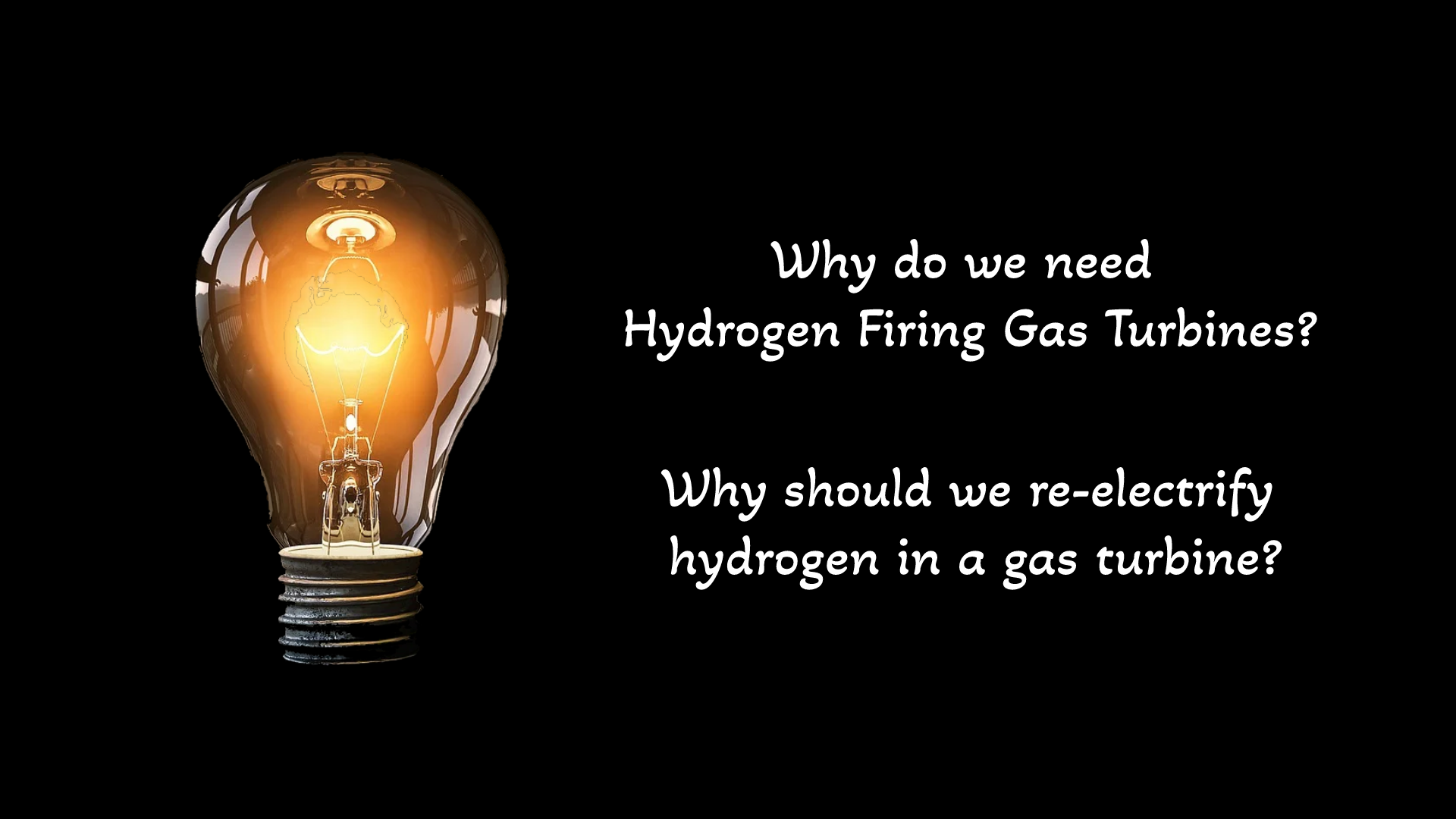Prospects of Re-Electrifying Hydrogen in Gas Turbines

Global warming has increased the demand for a carbon-free economy which has led humanity in a rush to find alternatives for fossil fuels that are both equally efficient and affordable. As a result, high interest is being shown in developing high-end technologies that enable power generation from solar and wind in a highly effective manner. No doubt, solar and wind are the best sources of renewable green energy, but the power produced from them depends on the weather. Using hydrogen as a fuel for power production will eliminate the above disadvantages as it can be stored and converted into electricity whenever and wherever needed, i.e., it enables a stable power production system. It is more efficient to transport hydrogen over long distances than electricity. Burning hydrogen in a gas turbine is more promising in this aspect as it could operate in a combined cycle configuration producing higher efficiencies. This would eliminate most of the emission problems discussed above due to burning fossil fuels for power production.
With minimal modifications in the combustors and fuel injectors, the gas turbine that burns natural gas can be made to combust hydrogen. This is more economical as there are several gas turbines operational throughout the entire world. For example, the UK has about 39 gas turbine power stations operated in combined cycle configuration, and these engines could be retrofitted, enabling them to combust hydrogen. Some of the major advantages of enabling gas turbines to burn hydrogen are briefly discussed below.
Adapting to the Current Framework
Gas turbines for a very long time are known for their fuel flexibility. Though they use natural gas as the primary fuel, they could also burn a blend of natural gas and hydrogen with very few modifications in the combustion system. This is a win on the economic side as the initial cost is reduced. This also reduces the problem of emission to a certain extent. For example, Ansaldo Energia’s GT36 gas turbine could burn a blend of 50% hydrogen in natural gas without any hardware modifications keeping the NOX emission as low as 15ppmv at 15% O2.
Modernizing Existing Gas Turbines
Though the combustion of hydrogen is different from that of natural gas, the design of the gas turbine is the same. This eliminates the time for manufacturing and the capital needed for a new design. With slight combustor modifications and the addition of some adjuvant parts, existing gas turbines can be retrofitted to combust hydrogen partially or fully. For example, Siemens has managed to combust hydrogen by making small changes in the burner design and fuel injection using additive manufacturing technology. This approach reduces the overall investment costs, thereby increasing the market interest in using hydrogen-fired gas turbines for a green future.
Emission Free Environment
Modern gas turbines can completely burn hydrogen without any modifications, but the only problem is that they result in increased NOX emission due to high temperatures inside the combustion chamber. Therefore, several OEMs are undergoing research in order to develop a DLN technology that would eliminate NOX emissions.
Revolution in CHP Plants
Heating is the sector that accounts for most of the carbon emissions as these burn fossil fuels to produce heat. According to AGFW, 82% of Germany's combined heat and power in the year 2018 was from the burning of fossil fuels. Gas turbines made to operate in CHP configuration can eliminate carbon emissions. These gas turbines can also be used in refineries and chemical industries, which is another major carbon-emitting sector.
++++++++++